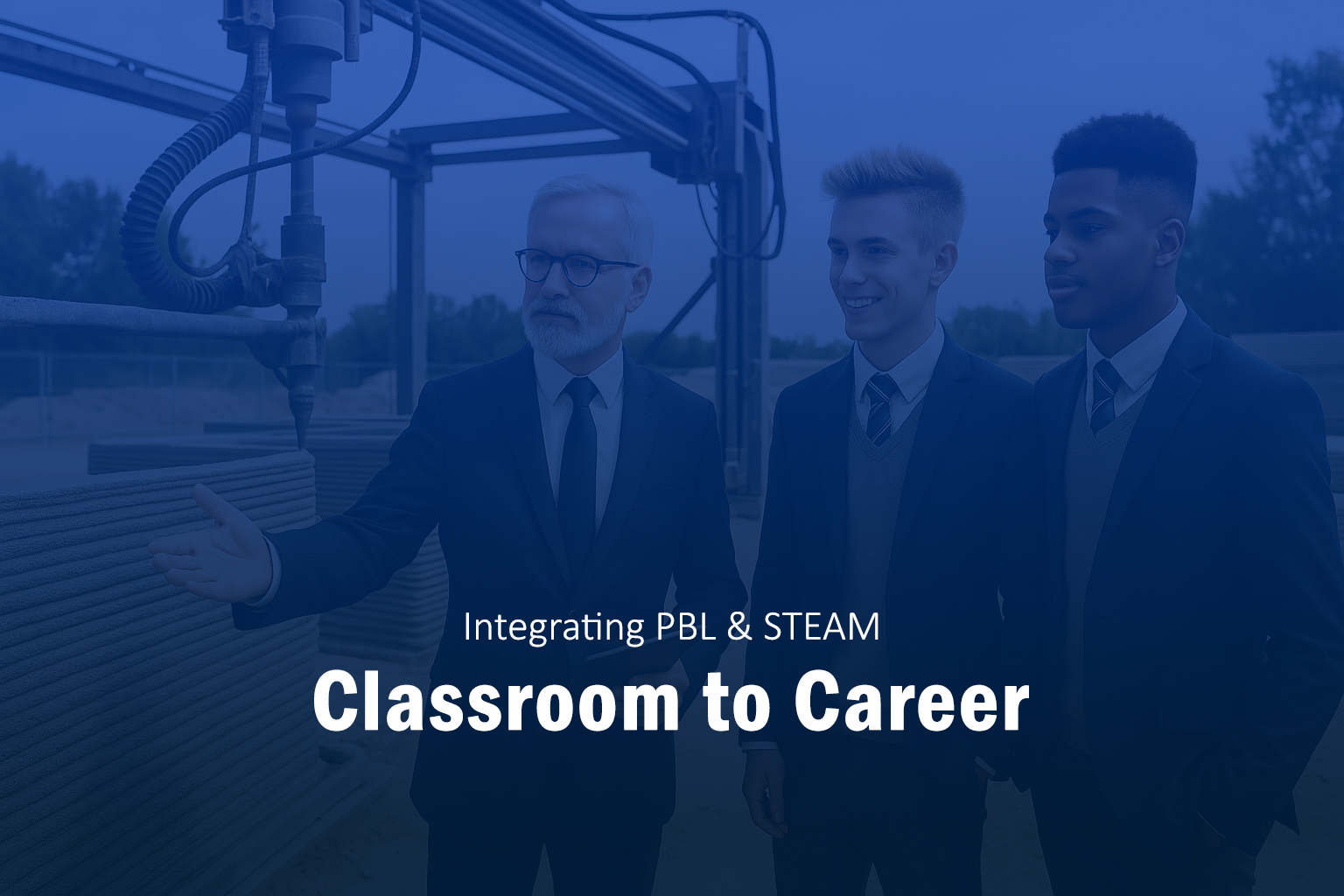Classroom to Career: How PBL & STEM Prepare Students for Success

The leap from classroom to career is wider than ever in a world shaped by automation, AI, and constant change. While artificial intelligence is transforming the workplace, it cannot replace the foundational skills and experiences that Project-Based Learning (PBL) and STEM education provide. These approaches bridge the gap between academic theory and real-world readiness, ensuring students are equipped for meaningful, adaptable, and successful careers.
The Skills Employers Want
According to LinkedIn’s 2023 report, the most in-demand skills are problem-solving, communication, teamwork, and digital literacy. The World Economic Forum (2023) echoes these findings, emphasizing adaptability and lifelong learning as crucial for career success. While AI can automate routine tasks and analyze data, it cannot replace the human skills that drive innovation, leadership, and collaboration.
How PBL & STEM Bridge the Gap
-
Real-World Application
PBL and STEM projects require students to apply academic knowledge to authentic challenges. Whether it’s designing a prototype, analyzing data, or presenting to a real audience, students gain practical experience that mirrors workplace tasks. AI can assist with research and simulations, but the hands-on experience of building, testing, and revising is irreplaceable. -
Collaboration and Communication
Teamwork is central to both PBL and STEM. Students learn to negotiate roles, resolve conflicts, and communicate their ideas clearly—skills directly transferable to any professional setting. AI can support group logistics, but the negotiation and empathy are human. -
Critical Thinking and Adaptability
PBL and STEM encourage students to analyze information, evaluate solutions, and adapt to feedback. This flexibility is essential in a rapidly changing job market. AI can provide data-driven insights, but it cannot teach the resilience and adaptability developed through real-world projects. -
Building Professional Networks
Many PBL and STEM programs involve partnerships with local businesses, universities, and community organizations. These connections provide mentorship, internships, and exposure to career pathways. AI can help connect students to resources, but it is real relationships that open doors.
Real-World Examples
- Internship-Integrated Projects: Some high schools partner with tech companies to offer capstone projects where students work alongside engineers or developers.
- Career Pathways Programs: Schools like those in the New Tech Network integrate PBL and STEM across subjects, culminating in student portfolios and career-readiness certifications.
- Industry Challenges: Students participate in national competitions like FIRST Robotics or Science Olympiad, building both technical and soft skills.
Research Evidence
A 2024 Brookings Institution report found that students who engage in PBL and STEM programs are more likely to pursue postsecondary education, secure internships, and report higher confidence in their career readiness (Brookings, 2024).
Strategies for Schools
- Align Curriculum with Workforce Needs: Regularly update projects to reflect current industry trends and technologies.
- Foster Partnerships: Collaborate with employers to create authentic learning experiences.
- Support Career Exploration: Offer mentorship, job shadowing, and exposure to diverse career paths.
AI is transforming the workplace, but it cannot replace the foundational skills, relationships, and adaptability built through PBL and STEM. By bridging the gap between classroom and career, these approaches empower students to succeed in any path they choose-using AI as a tool, not a substitute, for human potential.
References
- World Economic Forum. (2023). The Future of Jobs Report 2023.
- LinkedIn. (2023). The Most In-Demand Skills for 2023.
- Brookings Institution. (2024). Reimagining Education: The Power of Project-Based Learning.
